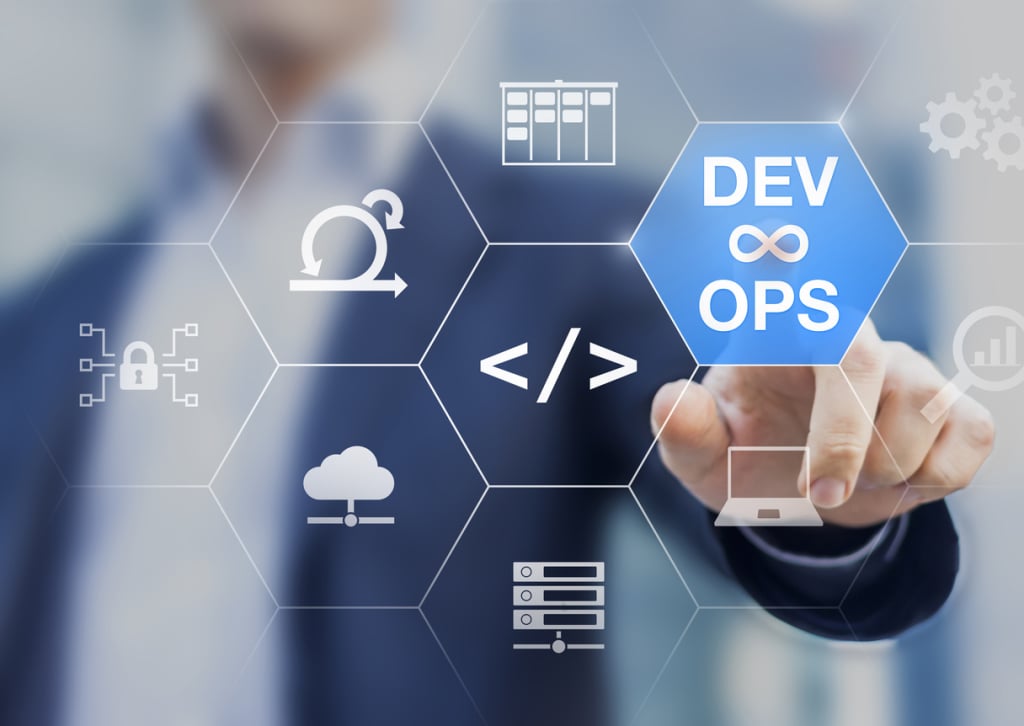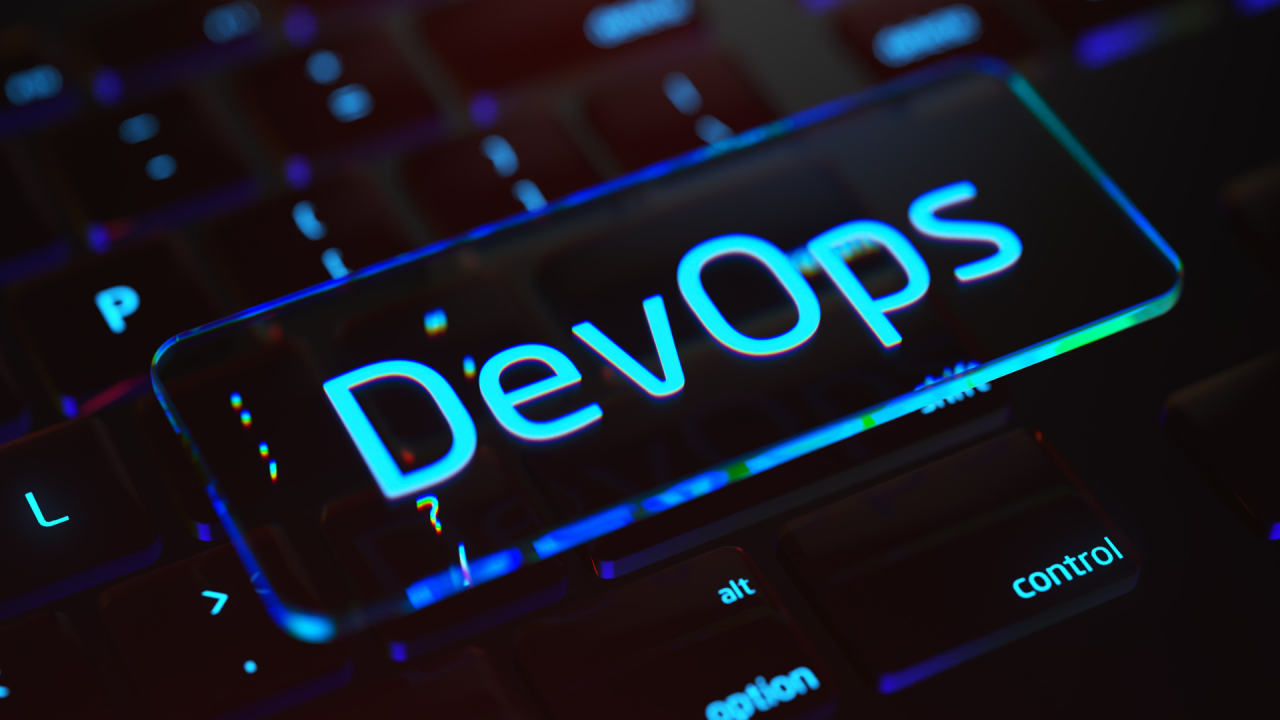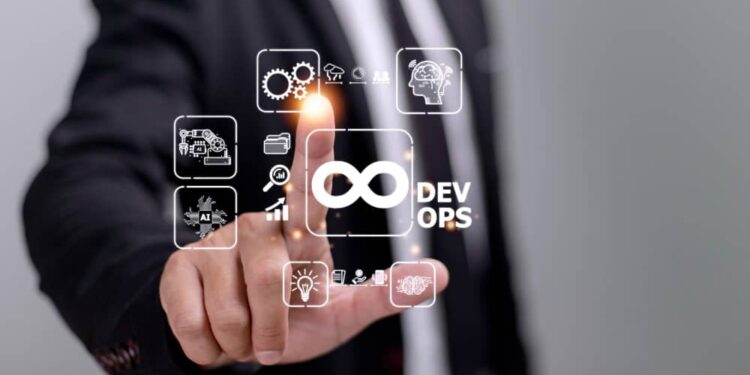The rapid pace of modern software development demands a new approach to building, deploying, and managing applications. The traditional silos between development and operations teams have been replaced by a philosophy of collaboration, automation, and continuous improvement. This is DevOps, a cultural and technical revolution that has fundamentally reshaped the software lifecycle. As businesses increasingly migrate to the cloud, a new and powerful synergy has emerged: DevOps on the Cloud. This article will provide a comprehensive deep dive into this dynamic partnership. We’ll explore the core principles, the key drivers behind its explosive growth, and the strategic imperatives for businesses and developers to successfully implement it. We will delve into critical areas such as automation, continuous integration/continuous delivery (CI/CD), and infrastructure as code, offering a roadmap for organizations looking to build a more agile, resilient, and innovative digital future.
The Foundational Principles of DevOps on the Cloud

DevOps is not a single technology but a cultural and technical philosophy that is built on a foundation of a few key principles. When these principles are applied in a cloud environment, they create a powerful and transformative synergy.
A. Automation: At its core, DevOps is about automating every phase of the software lifecycle, from the build and testing to the deployment and monitoring. The cloud provides the perfect environment for this.
- Automated Provisioning: Tools like Terraform and CloudFormation allow a developer to provision and manage cloud infrastructure as code. This means that a developer can write a script that automatically provisions a new virtual machine, a new database, or a new storage service in a matter of minutes.
- Automated Testing: Cloud-based testing platforms allow a developer to automatically test their code in a variety of different environments, from a development environment to a production one. This can significantly reduce the time and cost of testing, and it can help to catch a bug before it is deployed.
B. Continuous Integration/Continuous Delivery (CI/CD): CI/CD is a core tenet of DevOps. It is a methodology that focuses on a close collaboration between the development and operations teams, and it is powered by an automated pipeline.
- Continuous Integration (CI): CI is the practice of automatically integrating a developer’s code into a shared repository multiple times a day. This allows for a continuous feedback loop, where a developer can catch a bug before it is deployed.
- Continuous Delivery (CD): CD is the practice of automatically deploying a developer’s code to a production environment. This allows for a faster time to market, as a developer can deploy a new feature or a new application in a matter of minutes.
- The Cloud and CI/CD: The cloud provides the perfect environment for a CI/CD pipeline. The scalability and flexibility of the cloud allow a developer to spin up a new testing or production environment in a matter of minutes. This is a game-changer for a company that is trying to accelerate its time to market.
C. Infrastructure as Code (IaC): IaC is a methodology that allows a developer to manage and provision their IT infrastructure through code, rather than through a manual process.
- The Benefits of IaC: IaC offers a number of benefits, including consistency, automation, and a new level of collaboration between the development and operations teams. A developer can write a script that defines an entire cloud environment, and this script can be stored in a shared repository, where it can be versioned, reviewed, and deployed by the operations team.
- Key Tools: The key tools for IaC are Terraform, AWS CloudFormation, and Ansible. These tools allow a developer to define their infrastructure in a declarative way, meaning that they can define the desired state of their infrastructure, and the tool will automatically make it happen.
D. Monitoring and Logging: The cloud provides a new level of visibility into an application’s performance. The DevOps philosophy is to use this visibility to create a continuous feedback loop.
- Cloud-Native Monitoring: The major cloud providers offer a suite of cloud-native monitoring and logging tools that allow a developer to monitor an application’s performance, its security, and its cost.
- AI for Monitoring: AI and machine learning are being used to analyze a cloud environment’s logs and metrics in real time, detecting a potential problem before it leads to a costly outage. This is a new era of automated and proactive monitoring.
The Strategic Imperatives for Businesses
The adoption of DevOps on the cloud is not just a technical choice; it is a strategic imperative that can lead to a significant competitive advantage. Businesses that fail to adapt will be left behind in a new, agile, and automated digital world.
A. Accelerating Innovation and Time to Market: In a digital economy, the speed of innovation is a key competitive advantage. DevOps on the cloud allows a company to build and deploy a new feature or a new application in a matter of hours or days, not weeks or months. This faster time to market is a game-changer for businesses that are trying to stay ahead of their competitors.
B. Enhancing Resilience and Reliability: Cloud-native applications are inherently more resilient and reliable than their monolithic counterparts. The microservices architecture, for example, ensures that a single point of failure doesn’t take down the entire system. This enhanced resilience is a major factor for businesses that have mission-critical applications.
C. Cost Efficiency and Scalability: The DevOps philosophy, with its focus on automation and continuous improvement, can lead to a significant cost savings. The ability to automatically scale a service to meet demand, and to only pay for the resources that are being used, can lead to a more efficient and cost-effective cloud environment. This is a major factor for businesses of all sizes, from a small startup to a large enterprise.
D. The Cultural Shift to DevOps: The most successful companies in the DevOps world are those that have a culture of collaboration, automation, and continuous improvement.
- Breaking Down Silos: The traditional silos between development and operations teams are being broken down by a new philosophy of a shared sense of ownership and responsibility.
- The “You Build It, You Run It” Philosophy: The “you build it, you run it” philosophy holds that a developer is responsible for the performance and reliability of their code in production. This creates a powerful incentive for a developer to write high-quality, reliable code.
E. The Role of the Cloud Engineer: The role of the cloud engineer is changing from a technical expert to a strategic partner.
- “Cloud Architect”: The cloud engineer of the future is a “cloud architect” who is not just building a high-performing application but is also building a cost-effective, secure, and resilient one.
- Education and Awareness: A major part of this shift will be the education of cloud engineers on the importance of DevOps and the tools and technologies that they can use to be more agile and innovative.
The New Challenges of DevOps on the Cloud

While DevOps on the cloud offers a host of benefits, it also introduces a new set of challenges that businesses must be prepared to address.
A. Security and the “Shared Responsibility” Model: Security in a DevOps world is a new and complex beast.
- The New Threat Landscape: The attack surface of a cloud-native application is different from that of a traditional application. The threats are not just to the operating system or the network but to the individual containers, the APIs, and the third-party services that the application uses.
- Misconfiguration Risk: A simple misconfiguration of an IAM policy or an API gateway can open a digital door for an attacker. The “shared responsibility” model, which holds that the cloud provider is responsible for the security of the cloud, but the user is responsible for the security in the cloud, is a critical legal and strategic consideration.
B. Complexity and a Learning Curve: The DevOps world is complex. The number of different technologies, tools, and best practices can be overwhelming for a developer or a business that is just starting out. This complexity can lead to a steep learning curve and a significant upfront investment in training and education.
C. Data Management and Governance: Data management and governance in a cloud-native world is a new and complex challenge.
- Distributed Data: In a microservices architecture, data is often distributed across many different services and databases. This can make it difficult to get a holistic view of a company’s data and to ensure that it is in compliance with all relevant regulations, such as GDPR and CCPA.
- Data Portability: The portability of a container does not mean the portability of a database. Moving a large, stateful database between different cloud providers or on-premises is a major challenge.
D. The Cultural Shift: The DevOps movement is a cultural shift that can be difficult for a large, traditional organization to make. The traditional silos between development and operations teams can be hard to break down. The push for a DevOps culture, with its focus on collaboration, automation, and a shared sense of ownership, can be a major challenge for a company that is used to a more traditional, top-down management style.
The Strategic Roadmap for DevOps on the Cloud
Successfully navigating the DevOps on the cloud world is not a one-time project; it is a strategic roadmap that requires a commitment to continuous learning and a cultural shift.
A. Start Small and Learn: The best approach is to start small and learn. Begin with a single, non-critical application and use it as a learning opportunity. This will allow you to get a feel for the technology, the tools, and the best practices without the risk of a major failure.
B. Invest in Training and Education: The complexity of the DevOps on the cloud world requires a significant investment in training and education.
- Certifications: A number of new certifications, such as the Certified Kubernetes Administrator (CKA) and the AWS Certified DevOps Engineer, are emerging to help developers and IT professionals get the skills they need.
- Learning Platforms: The major cloud providers, as well as a number of third-party vendors, offer a variety of online courses and training platforms.
C. Embrace a DevOps Culture: The DevOps movement is fundamentally a cultural shift. A company must embrace a DevOps culture, with its focus on collaboration, automation, and a shared sense of ownership.
- CI/CD Pipeline: The first step is to build a CI/CD pipeline, which is an automated process that allows a developer to write code, test it, and deploy it to production in a matter of minutes.
- Cross-Functional Teams: The most successful companies are those that have cross-functional teams that include developers, operations engineers, and security experts.
D. Choose a Cloud-Agnostic Strategy: The future of the cloud is a multi-cloud and a hybrid cloud one.
- Containers and Kubernetes: The use of containers and Kubernetes is a key part of this strategy. They provide a portable and consistent way to run an application across different cloud providers or on-premises.
- A New Mindset: The cloud-agnostic mindset is a new way of thinking about cloud strategy. It holds that a company should not be tied to a single cloud provider. Instead, it should use a variety of cloud services and tools, and it should have the flexibility to move its workloads between them.
E. Prioritize Security and Governance: The security of a cloud-native application is a top priority.
- Shift-Left Security: The “shift-left” security philosophy holds that security should be integrated into the development process from the very beginning, rather than being added as an afterthought.
- Automated Security: A company should use automated security tools to scan its code, its containers, and its cloud environment for vulnerabilities and misconfigurations.
Conclusion
Mastering DevOps on the Cloud is a story of a new era of software development, one that is more agile, more resilient, and more innovative. The challenges are immense, from the complexity of microservices to the new era of cloud security. However, the opportunity is even greater: to build a more efficient, more scalable, and more equitable digital world. The decisions we make today will not only shape the future of DevOps but also define our relationship with data, technology, and the very concept of a digital business. The future of software development is here, and it is a new era of automation, collaboration, and continuous improvement.












